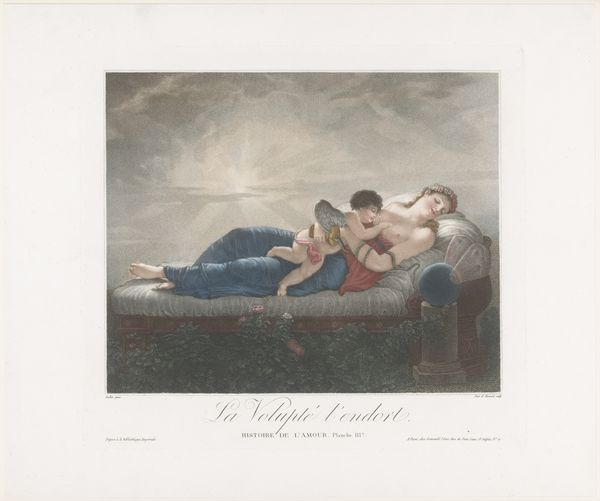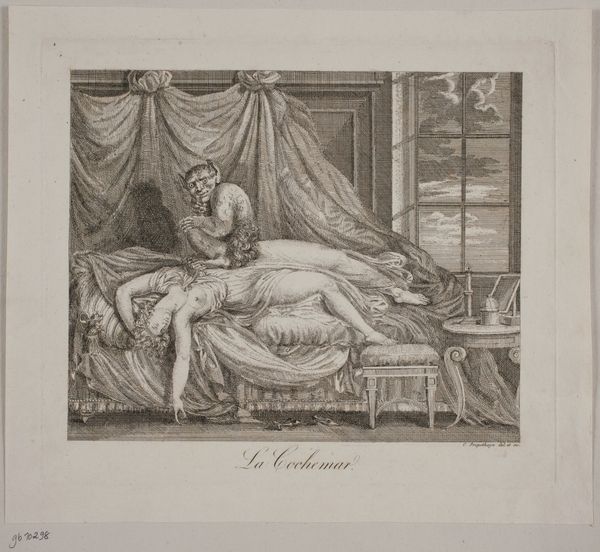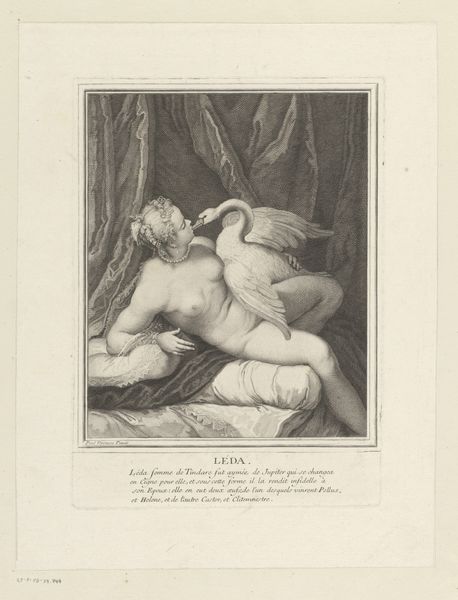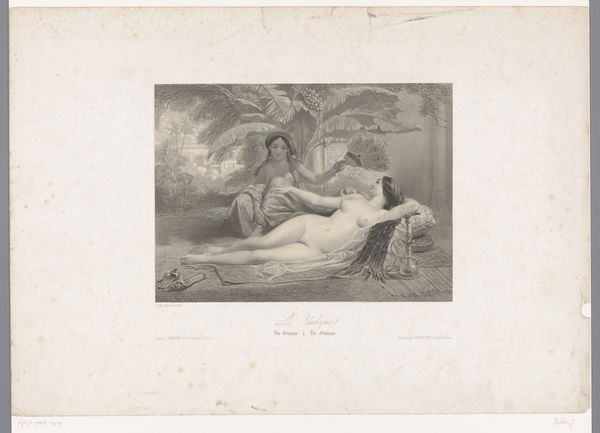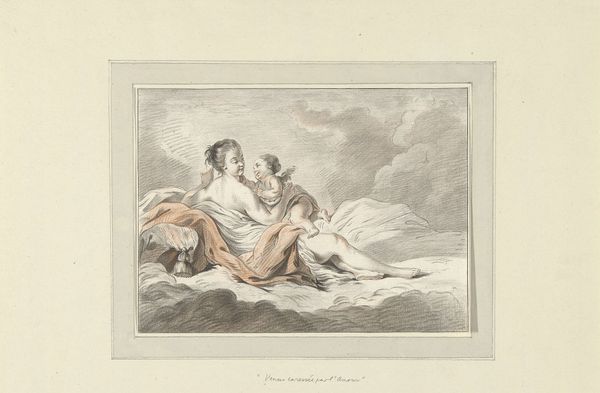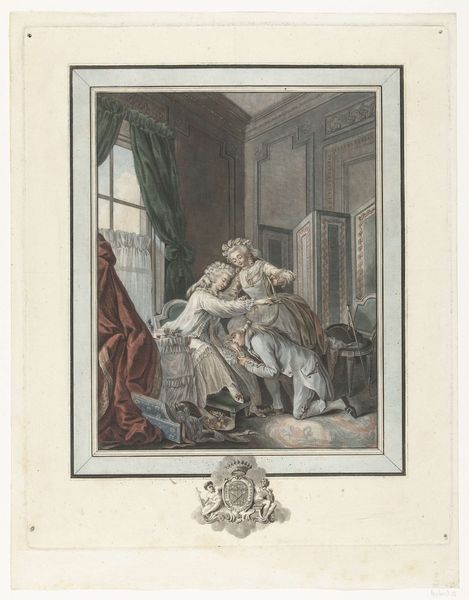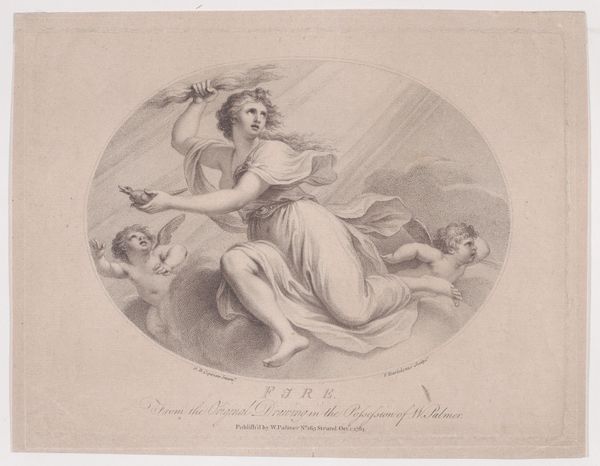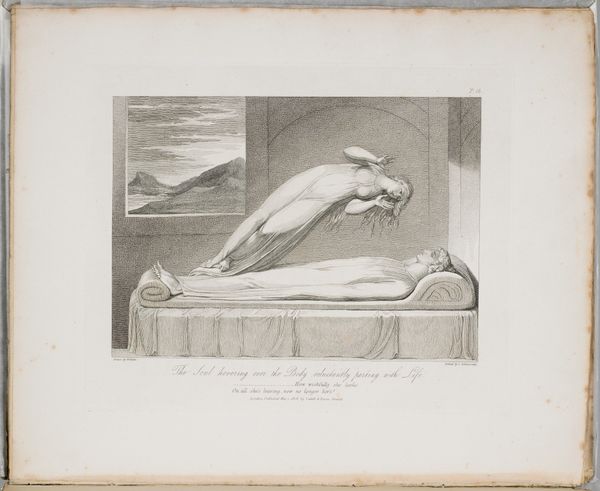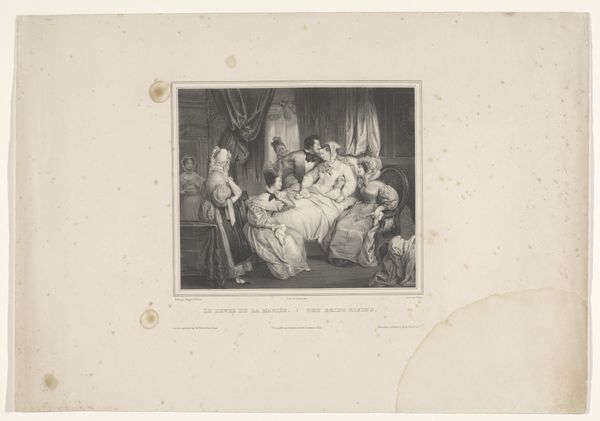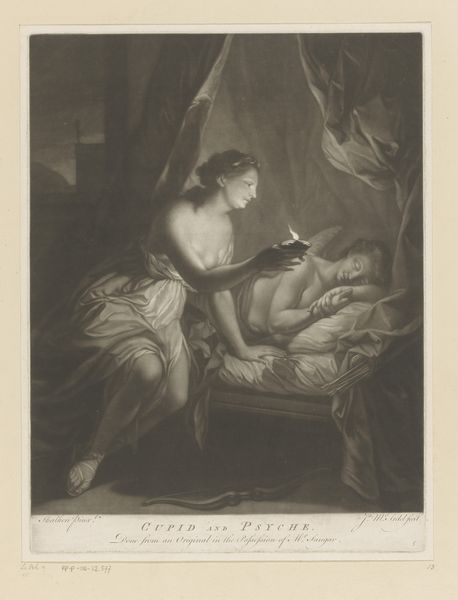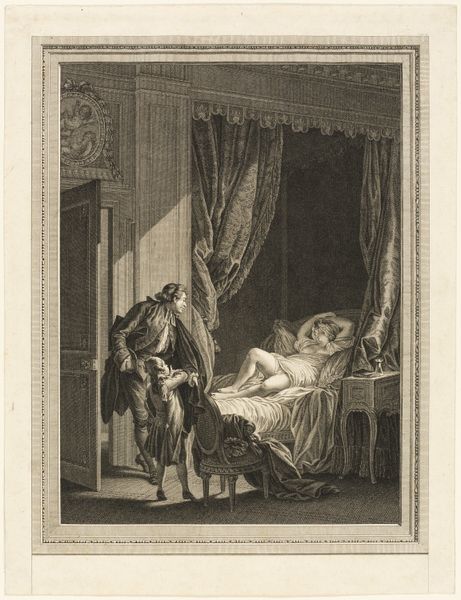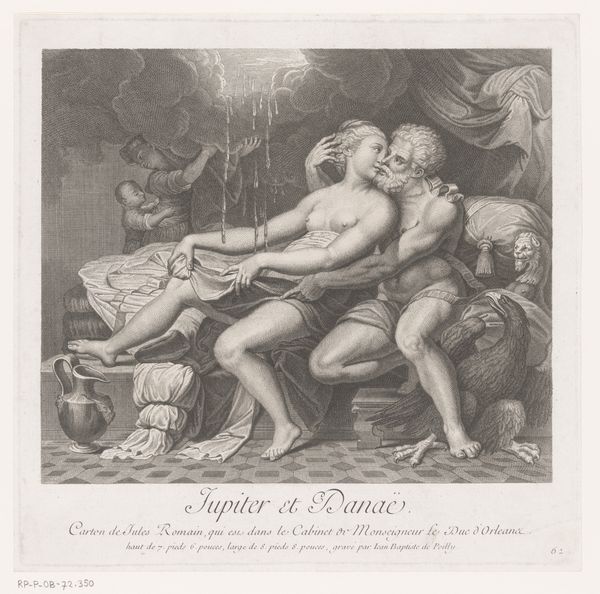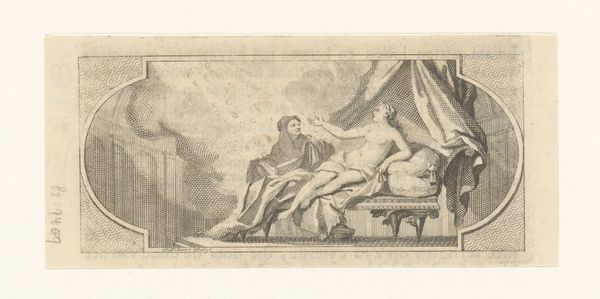
print, engraving
#
portrait
#
neoclacissism
#
allegory
# print
#
figuration
#
romanticism
#
history-painting
#
nude
#
engraving
Dimensions: height 360 mm, width 400 mm
Copyright: Rijks Museum: Open Domain
Curator: Welcome. We are looking at the print "Personificatie van Vriendschap (Amicitia), een brief lezend," dating from around 1817-1837. The work offers a personification of friendship through allegorical elements typical of the Neoclassical and Romantic periods. What's your first take on it? Editor: Well, visually it presents a peculiar blend. There’s the languid figure, the cherubic Cupid, the rather still dove... All create an aura of sentimentality offset by the sharp lines of the architecture. It feels balanced, if a bit saccharine. Curator: Considering its Neoclassical context, notice how the artist uses line and form to evoke specific historical references but also the social setting of the era. How do you perceive the choice of the engraving technique, especially considering it was intended as a print? Editor: The precision inherent in the engraving certainly speaks to the prevailing aesthetic. There’s an implied sense of order and reason which is clearly the artist highlighting the intellectual movement of the time, as much as a mode of reproduction for mass distribution. But does it also suggest a degree of remove? An emotional distance from the depicted subject? Curator: Perhaps. Let's look closer. The portrayal of Amicitia reading a letter isn't merely representational; it’s loaded with coded symbols reflecting contemporary discourses on virtue and societal bonds. This becomes apparent when one starts delving into the era’s expectations on friendships in comparison to labour distribution. Editor: Yes, the symbolism works on multiple levels. It could touch on concepts of platonic love but I tend to read this piece more as an aspirational representation of human relationships and how their consumption patterns shift with time. What else captures your eye from a formal standpoint? Curator: It would be difficult to pass on how the nude figure suggests certain levels of comfort, which speaks directly to its patron audience and thus, informs labour’s gender implications. Editor: Indeed, a rich exploration into class, labour, and the material contexts shaping artistic choices of the era, particularly when disseminating such themes across society, influencing moral ideals on society and companionship. Curator: Precisely! These considerations underscore how this image embodies complex sociopolitical values while maintaining an air of decorative artistry. Editor: Thank you for sharing the vision; it offered new avenues to perceive how technique and composition unite on these pieces.
Comments
No comments
Be the first to comment and join the conversation on the ultimate creative platform.
